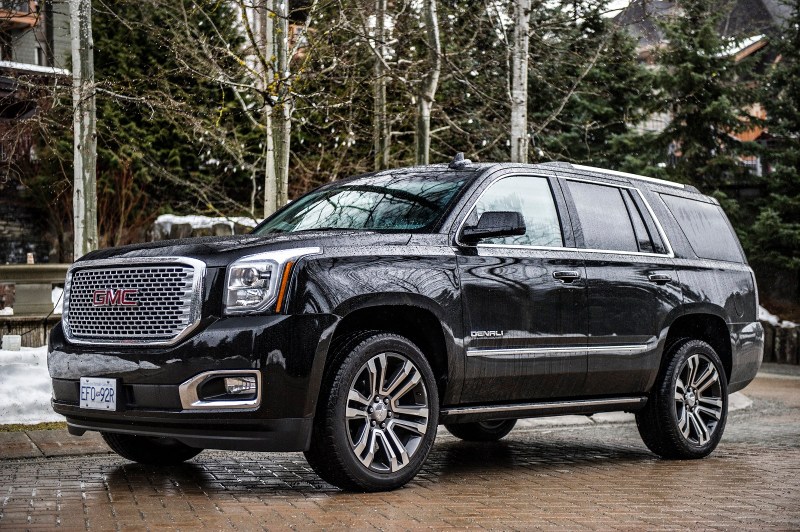I don’t have a family to tote around or anything massive to haul, and I certainly don’t live in the Midwest or on the slopes of the Rocky Mountains, but dammit if I don’t want a GMC Yukon Denali. After denying myself interest in SUVs for years, my chance to drive the Yukon Denali along the stunningly beautiful Sea to Sky Highway from Vancouver to Whistler, Canada made me a convert.
Setting out from Vancouver airport, I climbed into the cab and sat myself in a leather seat that not only supported my lumbar in the best of ways, but was also adjustable up to and exceeding my wildest and most demanding seating preferences. But, before I hit the road, though, I used the Denali’s dash-displayed infotainment/GPS to input the coordinates of my destination and proceeded to put my faith in technology and trusted that the Yukon would guide me in the right direction.

Leaving the airport and navigating through downtown Vancouver was easy, not only because of Canada’s excellent road and street system (thanks, Canada!), but also because of the Denali’s helpful features. The GPS map system features a projected display onto the driver’s side windshield that shows future turns and the distance to them in the form of a countdown meter. This was particularly useful in areas of Vancouver with small blocks where streets come immediately one after the other. Without the countdown system, I’m sure I would have made a couple of wrong turns otherwise.
As for the ride itself, the powerful 6.2L Ecotec3 V8 Engine (which handled the often steep hills/mountains with aplomb) was barely noticeable thanks to the quiet cabin interior feature, along with magnetic ride control (a suspension system that adjusts automatically up to 1000 times a second depending on road and terrain conditions) which made the occasionally rough and curvaceous road a very pleasant drive.
Throughout the drive, the Denali did an admirable job of keeping me safe–mostly from myself. As an aggressive lane changer (and driver in general), I was more than pleased to see a blind spot warning signal on the outside edges of my side mirrors, as well as lane departure warnings that would flash on my driver’s display. Prior to test driving the Yukon, I had always thought people who relied on these types of sensors and indicators were just weak drivers, but now, I have to admit, I’m right there with them. No longer having to crane my neck or strain the very limit of visible sight on my mirror angles, the blind spot and lane departure warnings made my 2.5 hour drive much more comfortable than it could have been.
I drove a top of the line trim version of the Yukon Denali, but for all the options and more detailed information on the rest of the great features and accessories this luxury sub-set of GMC provides, take a look here.
GMC also, inexplicably, allowed me to test-drive their equally as amazing Sierra All-Terrain pickup, and the Yukon’s older brother, the Yukon XL.
We were also lucky enough to take a crazy mountaintop snowcat ride in the rare and altogether badass Sierra All-Mountain. In partnership with Whistler Blackcomb ski resort, GMC outdid itself with this suped-up version of their 2017 GMC Sierra All-Terrain.
Fitted with 175 series Mattracks, the All-Mountain was designed and built specifically to tackle Whistler, BC’s steep, rugged, and snow-covered landscape. When riding in the All-Mountain, at night, with its many LED lights illuminating the kicked up powder around us, we almost mistook ourselves for figurines in a snowglobe. But once that 6.6 liter Duramax Diesel revved its 445 horses, we knew we were in a vehicle that could climb (or crush) any mountain. Unfortunately, though, this bad boy isn’t for sale. Sorry, guys.

















